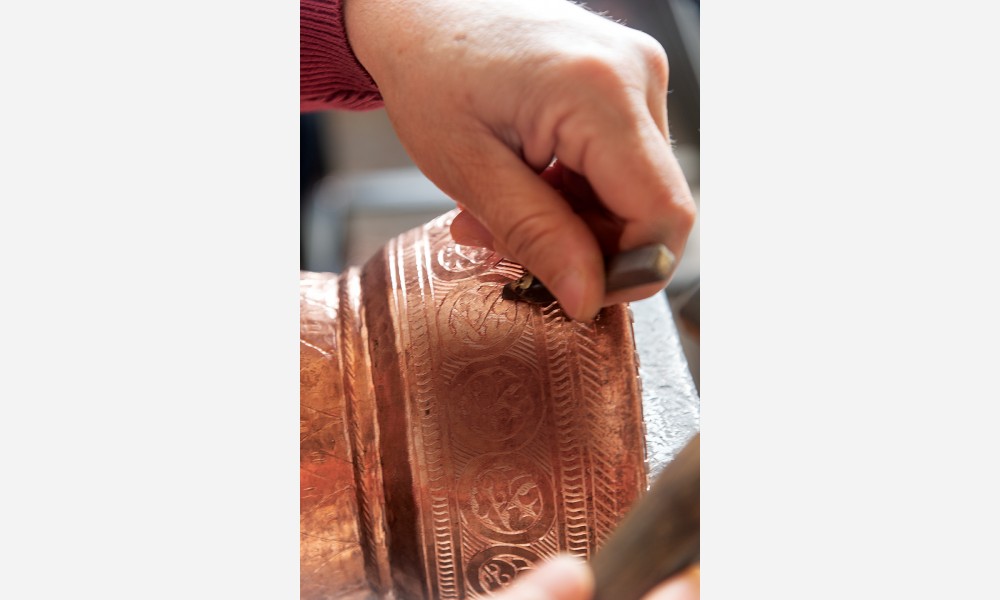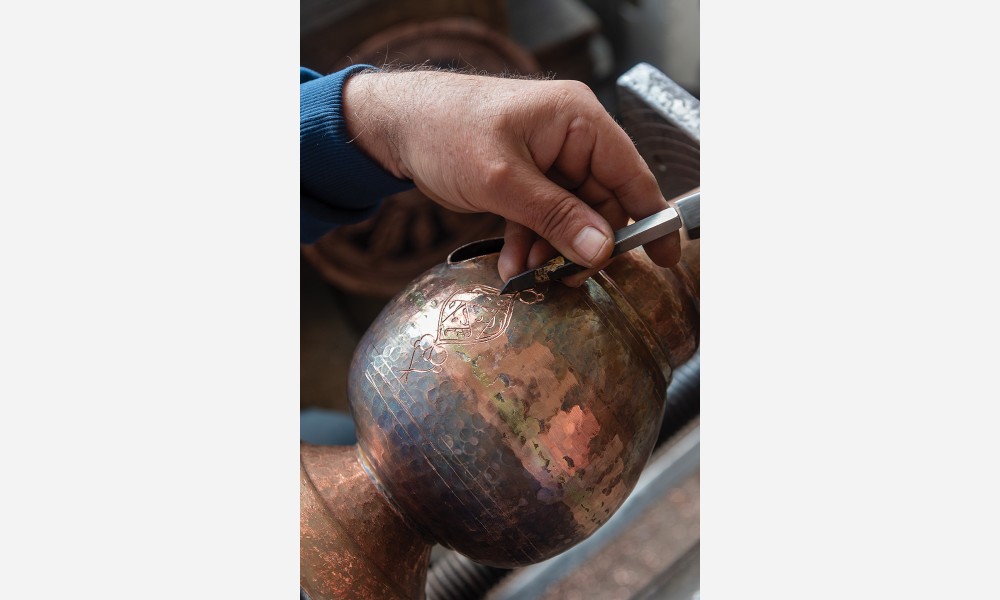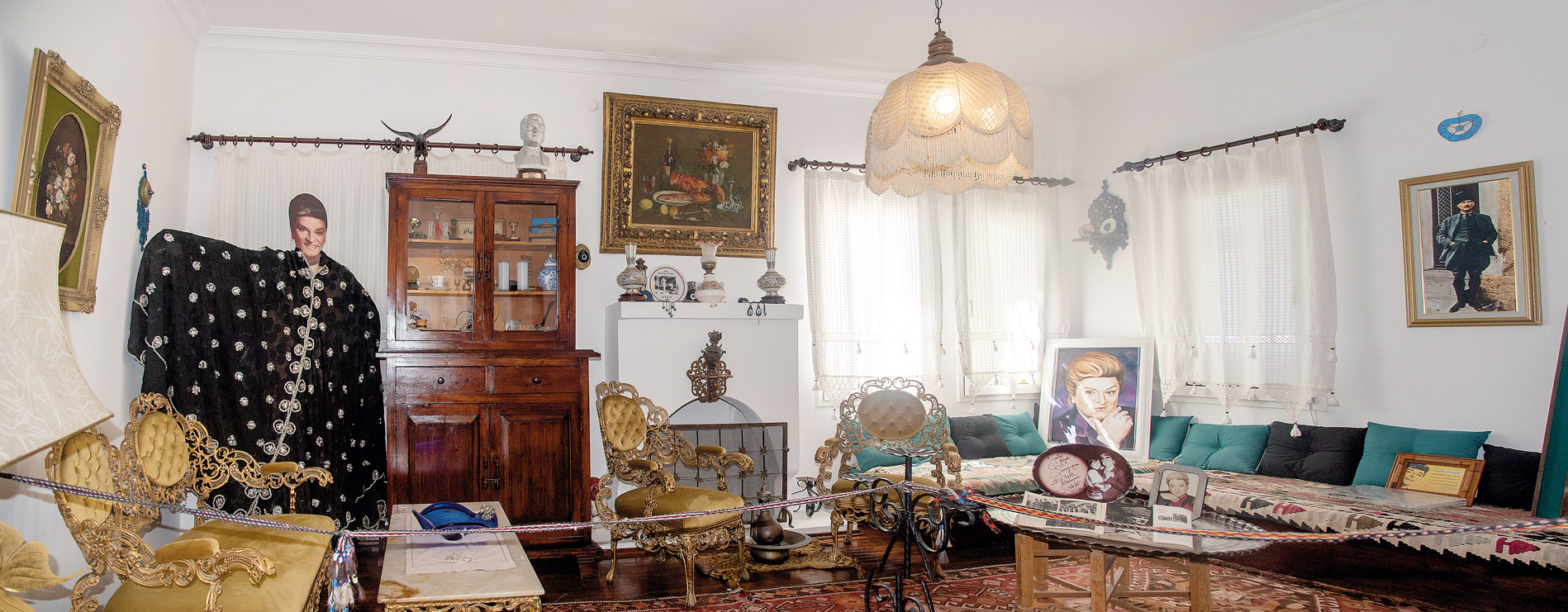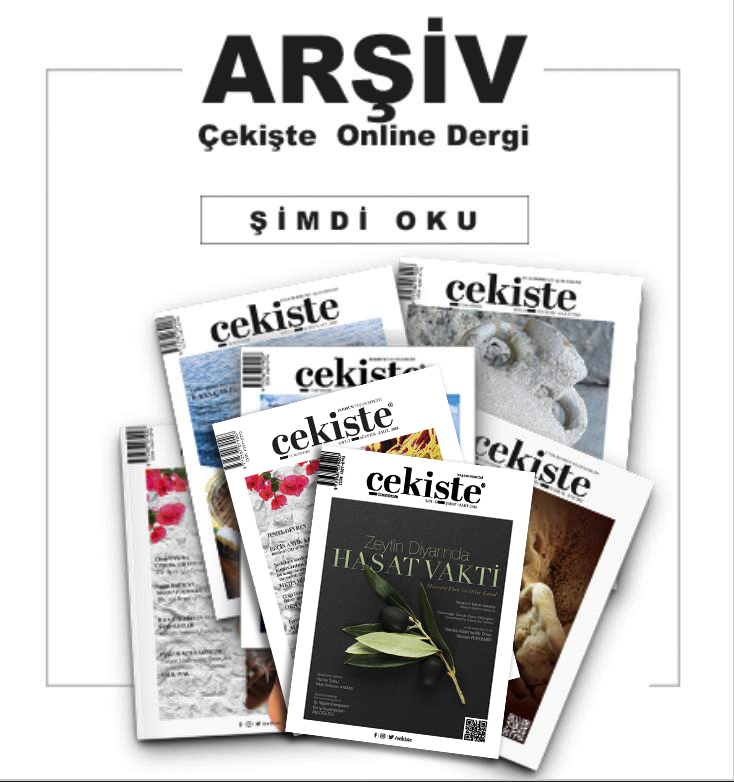KAVAKLIDERE COPPERWORKS

Coming from thousands of years ago, the story of copper is hidden in the myths... Some hunts for the history of copper in a fire lid by a traveller, some in an old forge and some on the historical streets where hammer echoes are heard...It is obvious that the acquaintance of mankind with copper dates back to very old times. After all, copper, which is a kind of ore, is older than mankind.
In Kavaklidere district, coppering maintains the distinction of being the oldest crafts of the region. Legend has it that the region, which joined the Ottoman Empire during the period of Murat II, had been "turkified" with the arrival and settlement of the nomads and then named "Kavaklidere", which means "stream with poplars" in Turkish because of its streams running and the poplars.
The feature made Kavaklidere the most important commercial centre of the period is that coppering developed after the Turks settled in this region and it became the centre of coppering covering the surrounding provinces. As if a huge bazaar, Kavaklidere, where over 200 coppersmiths used to hammer copper in the streets, had been the copper producer of all Western Anatolia. As coppering was such a common craft, even a copper factory, which was recently closed, had been established in Kavaklidere.
The reason the coppersmith profession being developed here is attributed to the abundance of copper mines in the region. However, even though the raw mine is extracted from Kavaklidere, copper plates are supplied from the Kula district of Manisa.
In the small town between the mountains, the craftsmen are still beating their coppers till late in the shops, which are opened early in the morning. Copper working in Kavalidere is an artisanship transferred from father to son. The number of coppersmiths, which used to be over two hundred, is just thirteen now. The future of the profession is in danger as there are no more apprentices training.
How many hits with a hammer fit a lifetime? In the occasion, where everything is standardised and made by machines, copper is a material that each piece of which is shaped in the hands of its master. The name of the master used to be heat–sealed below the copper. The reason why it had been done is obvious; to recognise the copper work while in trade and its value, which was attributed to whom it was made by. These seals still exist but copper is not used like it used to be. As a matter of fact, it is much healthier than the materials we use now as the coppersmith, Mehmet Ali Koroglu says. The point is to know how to use copper and treat it with care.
We come across with the artworks; lunch boxes, buckets, pannikins, basins, jugs, water pitchers, milk jugs, hammam bowls, plates, trays, coffee grinders, coffeepots, soap dispensers, cauldrons, pasha mangals (ottoman style grill); shaped by hammers, anvils, pens, wooden mallets in Kavaklidere.
Copper is the short story of a mine that touches the man. This short story contains a huge civilisation.
Copper, which hits the anvil in each hammer knock, slowly gets shaped as desired, and later it is decorated, one by one, finely, by the knocks of the same hammer… Eventually, it is considered as valuable as the number of hammer knocks.
Copper hammering is done to shape the copper and is an important stage of the art. The material to be hammered is placed on the anvil and then it gets hammered. While hammering, several tools, such as hammers, tilt hammers, anvils, ball-peen hammers, pliers, depending on the shape of what is to be hammered, are used. The pattern is applied in two ways. One is scraping, and the other is the embossing technique. Copper is shaped by beating in the hands of a master. Using sharp and steel-tipped pens the pattern is embossed.
The coppersmiths in Kavaklidere have a secret language, which only they can speak. Copper is called “palle” and the language is called “Palleci”, the language of palle/copper makers”.
Until recently, coppersmiths used to load their materials onto mules, wander from village to village, tin-cover the coppers of people, and sell them new things they needed.
They invented the special language to get better communication among themselves in remote locations, without being understood by the customers. The language of the coppersmith was widely used in the rural areas in order to save the money earned safely and to keep the prices of copper goods or the containers to be tin-covered unknown by the customers. It is believed that this language has been spoken since the 16th century, in brief, for 5 centuries.
Some encrypted words from the language, Palleci;
The ears don’t hear
Beautiful
Ugly, Negative
Will you eat?
To go
Foreigner
Woman
Cigarette
Praying
Fig
Teacher
Weapon
Police
To have a look














